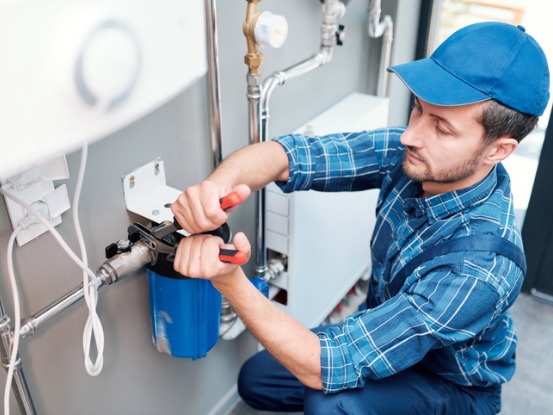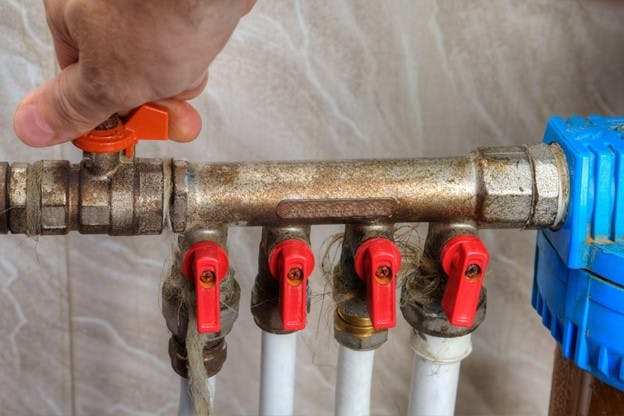Your In-Depth Manual to Addressing Low Water Pressure in Your Home
Your In-Depth Manual to Addressing Low Water Pressure in Your Home
Blog Article
On this page on the next paragraphs you will discover some helpful insight related to Dealing with Low Water Pressure in Your Home.

Low tide pressure in your home can be an aggravating trouble, influencing everything from bathing to cleaning recipes. If you're experiencing weak water flow, there are several feasible reasons and solutions to explore. In this guide, we'll discuss common reasons for low tide pressure and practical steps to deal with the concern properly.
Introduction to Low Tide Stress
Low water pressure happens when the circulation of water from your faucets, showers, and other fixtures is weaker than normal. This can make daily tasks a lot more tough and less reliable. Comprehending the root causes of low tide pressure is essential to finding the ideal solution.
Common Root Causes Of Low Tide Stress
Pipe Obstructions
In time, pipelines can end up being clogged with natural resource, debris, or debris, limiting the circulation of water. This is a common concern in older homes with galvanized steel pipelines.
Deterioration
Deterioration within pipes can lead to leaks and decreased water pressure. Corrosion build-up can tighten water flow, specifically in maturing plumbing systems.
Faulty Stress Regulatory Authorities
Stress regulators are accountable for preserving consistent water stress in your home. If they malfunction, it can lead to low tide stress or irregular circulation throughout the house.
Metropolitan Water System Issues
Often, the problem exists outside your home. Municipal supply of water concerns, such as main line leakages or upkeep job, can momentarily lower water stress in your area.
Exactly How to Detect Low Tide Pressure
Examining Faucets and Fixtures
Begin by examining the water stress at different faucets and fixtures throughout your home. If the issue is separated to particular areas, it might show local issues.
Checking Pipes
Inspect noticeable pipes for indications of leaks, deterioration, or obstructions. Take notice of any kind of uncommon audios, such as banging or rattling pipelines, which can suggest concerns within the plumbing system.
Consulting with a Plumber
If you're not able to identify the reason for low tide pressure, take into consideration working with a specialist plumber to conduct an extensive examination. They can recognize underlying issues and recommend ideal solutions.
Do It Yourself Solutions to Take Care Of Low Tide Stress
Cleaning Up Aerators and Showerheads
Mineral deposits can build up in aerators and showerheads, minimizing water flow. Remove and clean these components consistently to enhance water pressure.
Flushing Water Heater
Debris buildup in the hot water heater can limit circulation and reduce efficiency. Flushing the storage tank periodically helps get rid of debris and maintain optimum performance.
Checking Pressure Regulator
Make sure that the stress regulator is functioning appropriately. Readjusting or changing the regulator can assist recover proper water pressure throughout your home.
Cleaning Clogs in Water Lines
For small blockages, attempt making use of a plumbing serpent or chemical drain cleaner to clear blockages in pipes. Be cautious when utilizing chemicals and follow safety and security standards.
When to Call a Specialist Plumber
If do it yourself initiatives stop working to resolve the concern or if you think significant plumbing problems, it's ideal to seek support from a qualified plumber. They have the competence and devices to attend to intricate issues securely and properly.
Preventive Measures to Maintain Water Stress
Routine Maintenance
Schedule regular upkeep for your plumbing system to avoid issues such as rust, leaks, and clogs. Addressing minor issues early can help stay clear of more considerable repair services in the future.
Mounting a Pressure Booster
Consider setting up a pressure booster pump to enhance water stress in locations with consistently low circulation. This can be especially beneficial for multi-story homes or homes with high-demand components.
Monitoring Water Use
Bear in mind water use routines and avoid ill-using the plumbing system. Simple adjustments, such as incredible showers and washing lots, can assist maintain sufficient water stress.
Conclusion
Dealing with low tide pressure can be frustrating, however identifying the underlying causes and applying appropriate services can bring back optimum flow throughout your home. Whether it's cleansing aerators, examining pipelines, or consulting with a plumber, taking proactive actions can make sure a stable supply of water for your day-to-day demands.
FOUR WAYS TO FIX LOW WATER PRESSURE NOW
Turning on a shower or faucet only to find the water comes out in a sad, slow drizzle is never a good feeling. How exactly are you supposed to wash a pan or take a quick shower when it takes 10 minutes just to rinse off a little soap? The good news is that when your water pressure is bad, there's always a cause: typically one that can be easily fixed. Here are some of the most common causes of low pressure and what you can do to fix the issue:
DEBRIS AND MINERAL DEPOSIT BUILDUPS
If you notice low water pressure from just one or two of the fixtures in your house, the problem likely has to do with debris buildup. Water is full of minerals and other debris, all of which can accumulate in your pipes and on your fixtures. This can cause a blockage that affects how much water flows through. To fix this, try filling a small plastic bag with white vinegar, and use a rubber band to hang it around your showerhead or faucet. Let the head of the fixture soak for a few hours, and the vinegar should loosen the deposits.
WATER LEAKS
Leaks are another common cause of low water pressure. If water is flowing out of your plumbing through a hole or crack before it can reach your fixture, the pressure coming out of the faucet or showerhead will be lower. A plumbing professional is your best bet for finding and repairing a leak in your water supply pipes.
Leaks are another common cause of low water pressure. If water is flowing out of your plumbing through a hole or crack before it can reach your fixture, the pressure coming out of the faucet or showerhead will be lower. A plumbing professional is your best bet for finding and repairing a leak in your water supply pipes.
FOUR WAYS TO FIX LOW WATER PRESSURE NOW
Turning on a shower or faucet only to find the water comes out in a sad, slow drizzle is never a good feeling. How exactly are you supposed to wash a pan or take a quick shower when it takes 10 minutes just to rinse off a little soap? The good news is that when your water pressure is bad, there's always a cause: typically one that can be easily fixed. Here are some of the most common causes of low pressure and what you can do to fix the issue:
DEBRIS AND MINERAL DEPOSIT BUILDUPS
If you notice low water pressure from just one or two of the fixtures in your house, the problem likely has to do with debris buildup. Water is full of minerals and other debris, all of which can accumulate in your pipes and on your fixtures. This can cause a blockage that affects how much water flows through. To fix this, try filling a small plastic bag with white vinegar, and use a rubber band to hang it around your showerhead or faucet. Let the head of the fixture soak for a few hours, and the vinegar should loosen the deposits.
WATER LEAKS
Leaks are another common cause of low water pressure. If water is flowing out of your plumbing through a hole or crack before it can reach your fixture, the pressure coming out of the faucet or showerhead will be lower. A plumbing professional is your best bet for finding and repairing a leak in your water supply pipes.
Leaks are another common cause of low water pressure. If water is flowing out of your plumbing through a hole or crack before it can reach your fixture, the pressure coming out of the faucet or showerhead will be lower. A plumbing professional is your best bet for finding and repairing a leak in your water supply pipes.
A VALVE ISSUE
If you have low water pressure throughout your home, check your main shut-off valve to make sure it's completely open. You may also want to see if there's a pressure-reducing valve installed. If there is, have a plumber help you adjust the settings to get the pressure you're looking for.
OTHERS USING WATER
Believe it or not, your low water pressure could be caused by your neighbors. If you notice low pressure at certain times of day, it may be because you and the people living next to you have similar schedules - when everyone is showering at the same time, the pressure will be lower in every home. Low pressure throughout the neighborhood may also be caused by an issue with your municipal water supply. If that's the case, call the supplier to see if they're working on the issue.
https://www.rotorooter.com/blog/water-leaking/low-water-pressure-fixes/

Hopefully you enjoyed reading our piece on 4 Ways to Troubleshoot Low Water Pressure. Thanks a lot for finding the time to read through our article. Loved our write up? Please quickly share it. Let somebody else check it out. We thank you for reading our article about Dealing with Low Water Pressure in Your Home.
Set An Appointment Report this page